Mollusc of the year 2023: The Chilean Abalone (Concholepas concholepas)
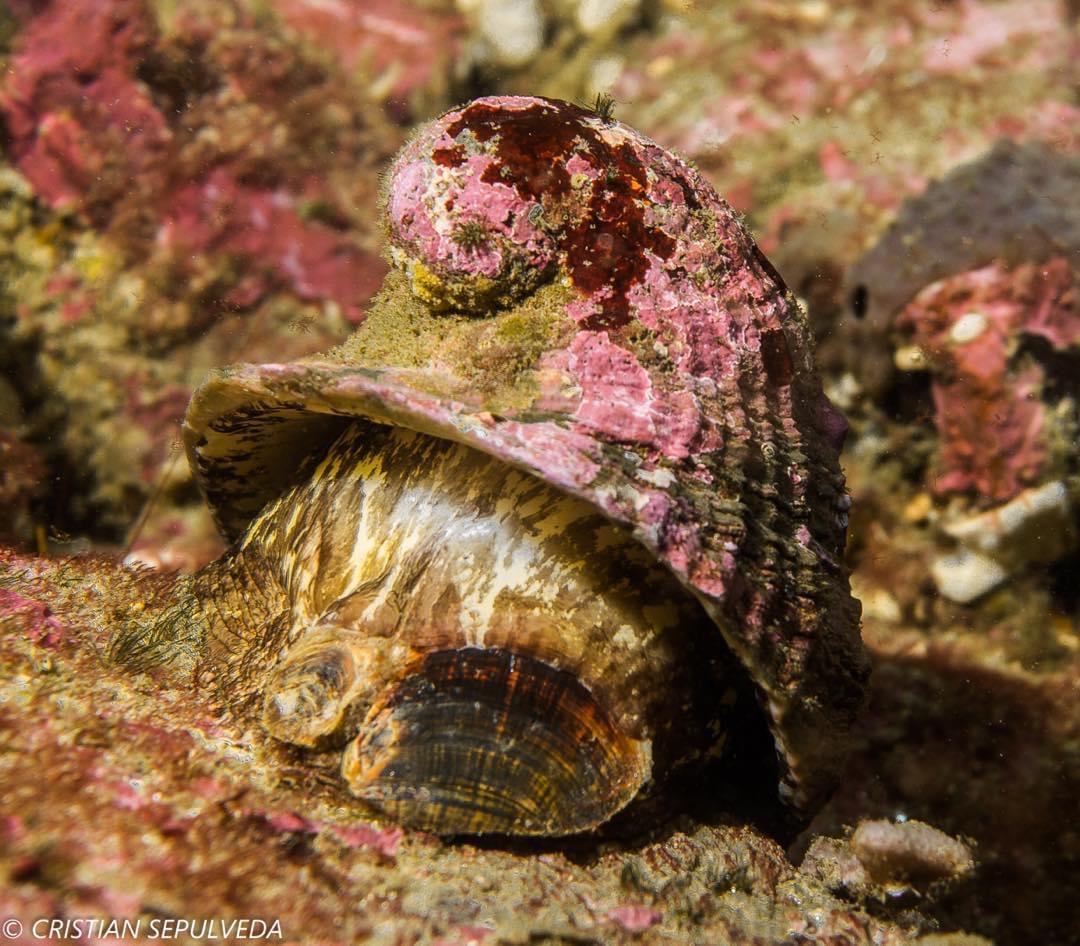
Concholepas concholepas belongs to the family of Murex snails, which are mostly much more spectacular seashells; Concholepas is found in the south-eastern Pacific and adult specimens can reach a shell length of about 15 centimetres. As a carnivore, it plays the role of a keystone species that controls the occurrence of other species. Known in its native country as “Loco” (a loanword of the Mapuche people in Chile), the snail with the large foot and tough shell has great cultural, social, economic, evolutionary, and ecological importance there. But its stocks are endangered due to severe overfishing, as the Chilean Abalone is traded worldwide as a delicacy.
The five nominees for the "International Mollusc of the Year 2023"
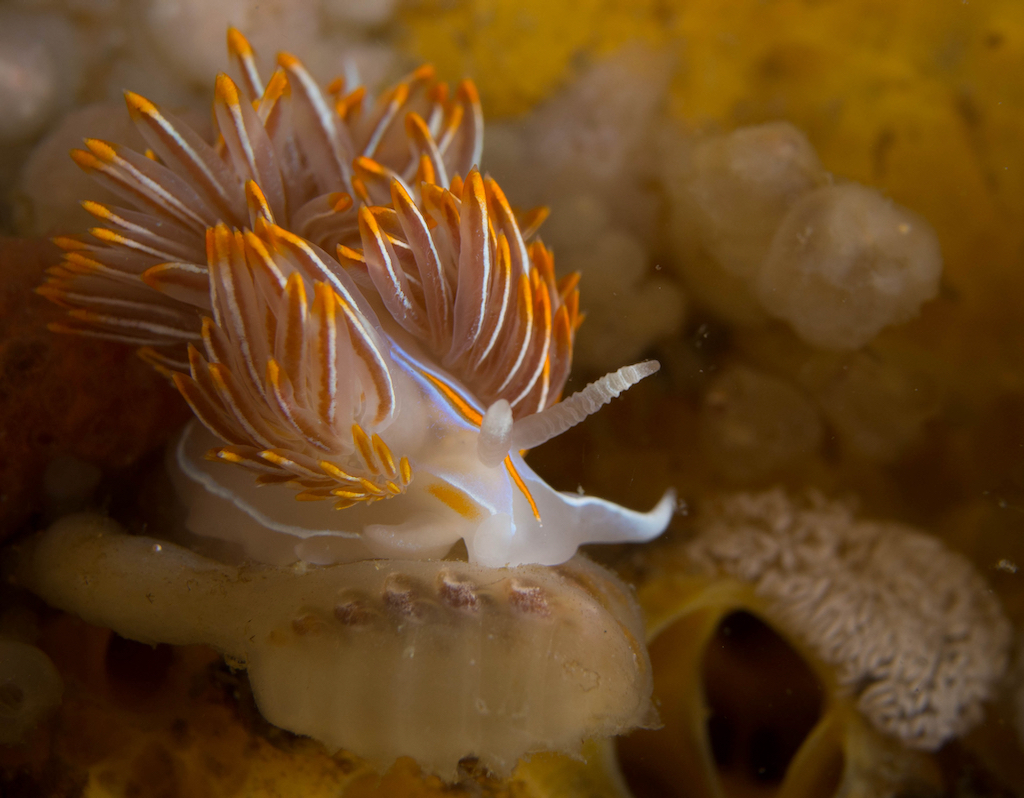
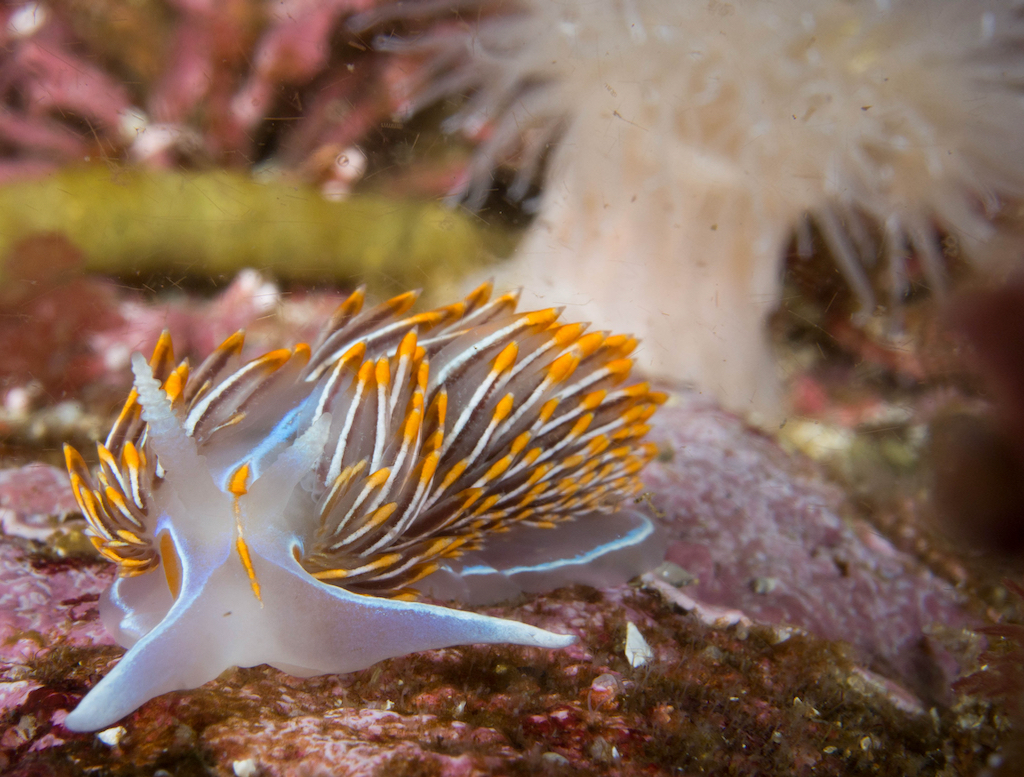
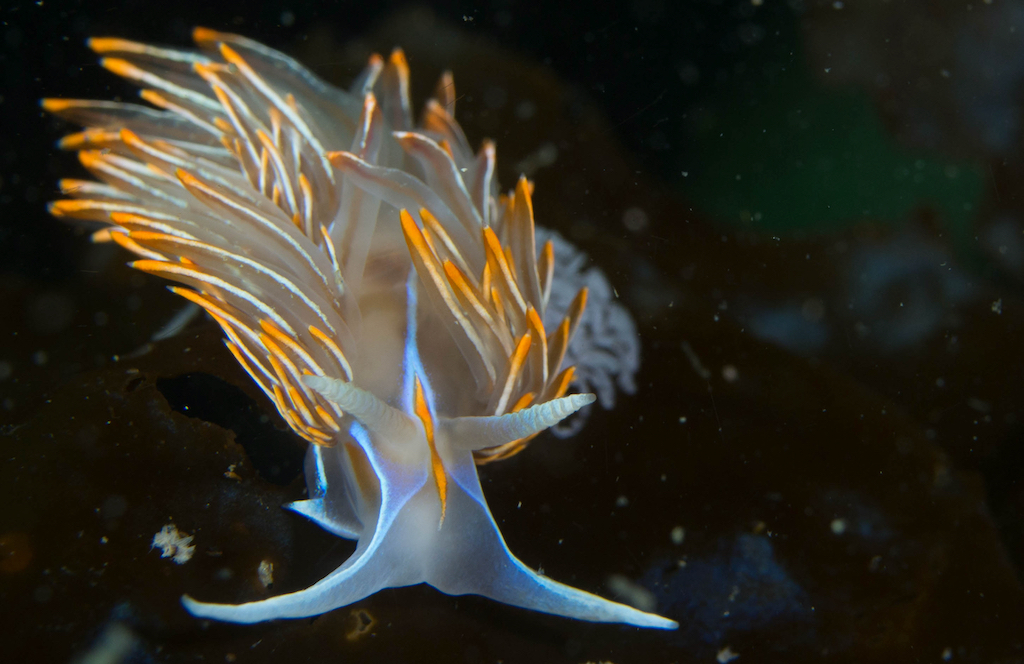
Hermissenda crassicornis, Photos: Lauren Wilson
Hermissenda crassicornis, the thick-horned nudibranch
What is it? Hermissenda crassicornis, or thick-horned nudibranch, is a striking sea slug covered in horn-like outgrowths, called cerata. These “horns” serve a dual purpose by increasing their body surface area for respiration and sequestering venomous stinging cells to protect them from predators. The cells are not produced by the nudibranch itself, but are stolen directly from their prey!
Where do they live? These sea slugs are widely distributed along the Pacific coast of North America, from Northern California to Alaska. They are commonly found in the rocky intertidal zone, but can also be seen inhabiting plant and animal communities on docks, which include some of their favorite prey like sea anemones. Their diet is quite varied: they also enjoy corals, mussels, worms, and even other nudibranchs!
What do they look like? These nudibranchs grow up to 5 cm long, with a smooth body the color of frosted glass. Their back is covered in cerata that are often orange/maroon, with a distinct vertical white stripe that distinguishes them from closely related Hermissenda opalescens or Opalescent Nudibranch. The two rhinophores (scent receptors) extending from their head are where the name “crassicornis” comes from, meaning “thick-horned”. Their foreheads are decorated with an orange flare flanked by blue stripes.
What secrets will this genome reveal? Hermissenda crassicornis has a very simple nervous system which makes them is an important model organism for studying classical conditioning, associative learning, and memory formation (as well as the physiology of sensory and motor neurons). With the genome available, researchers could unravel the molecular machinery behind these processes and where they occur in the neural network. For example, we could identify genes being actively expressed in different regions during memory consolidation. Assembling the genome for H. crassicornis is not just beneficial for marine science, but across many fields of study, e.g. in understanding the processes of learning in mammals! “
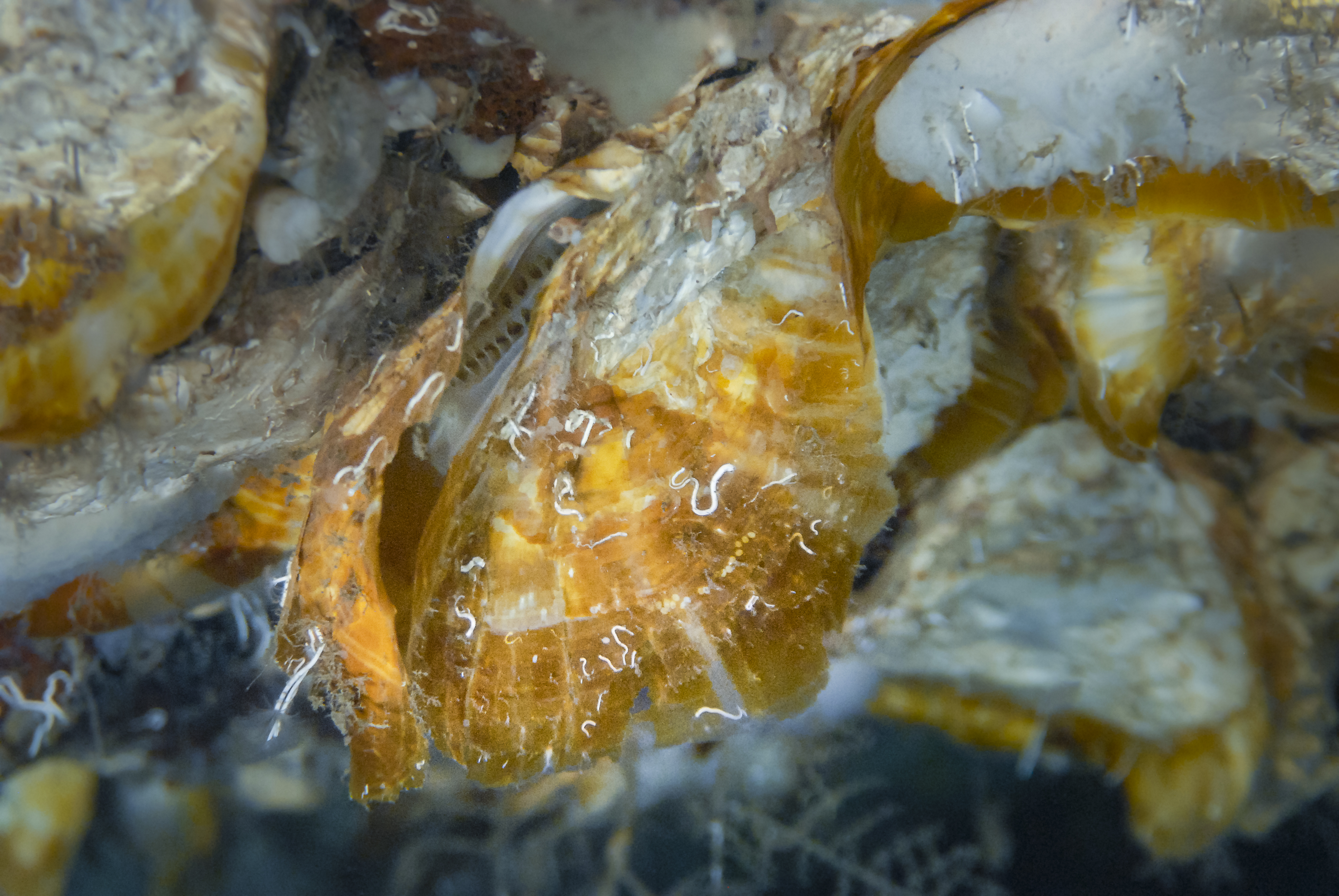
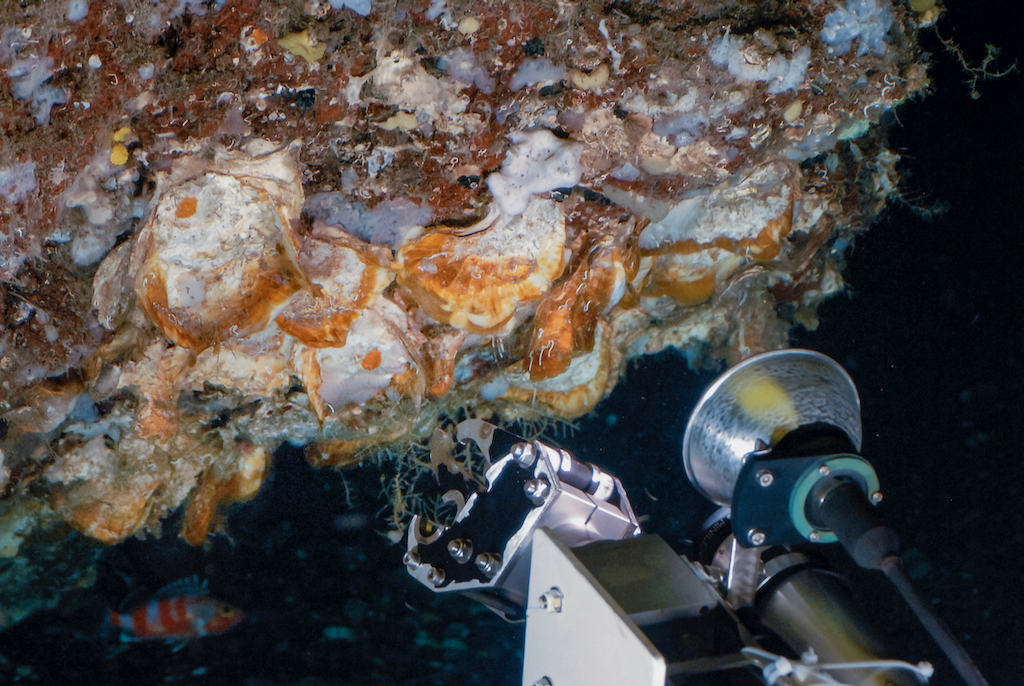
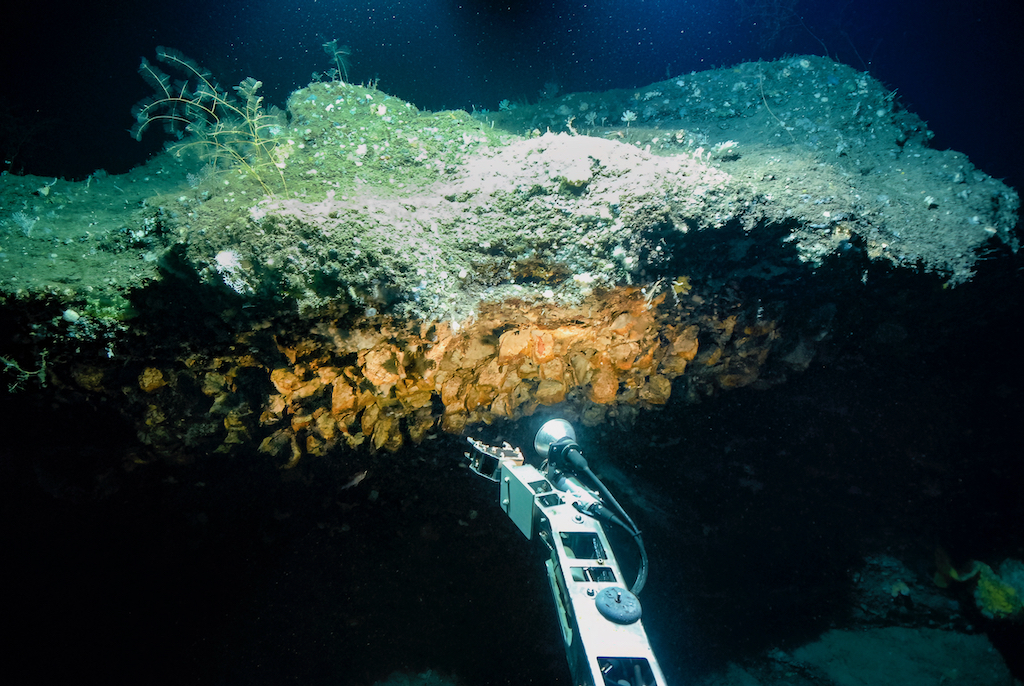
Neopycnodonte zibrowii, Photos: Dr. Max Wisshak and Rebikoff-Niggeler Foundation
Neopycnodonte zibrowii, the giant deep-sea oyster
What is it? The giant Methuselah oyster is one of the largest deep-water clams and one of the oldest animals ever discovered (excluding colonial animals like corals) – with a record-breaking lifespan exceeding 500 years!
Where do they live? This exceptional organism has been found in the deep-sea of the Mid- and Eastern Atlantic Ocean and the Mediterranean Sea, with some records from as deep as almost 1000 m. Its larvae start off with a nomadic lifestyle but conclude by cementing themselves onto a protective vertical wall or overhang, living sheltered from sedimentation. Over millennia and provided optimal environmental conditions Neopycnodonte zibrowii can form hanging oyster reefs. Live individuals can be spotted and documented only with the aid of advanced marine technologies, explaining why such a large animal (up to 30 cm) has remained without a scientific name until as recently as 2009.
What do they look like? The soft body of Neopycnodonte zibrowii is skinny and its shell compact and heavy in comparison to its shallow-water relatives. Its strong fixation in a sheltered habitat and its thick shell are an efficient strategy to avoid environmental hazards and predators, and to enable a lifespan of over a half millennium.
What secrets will this genome reveal? Sequencing the genome of Neopycnodonte zibrowii will give important insights into its extraordinary longevity and the phylogenetic relationship to its common shallow-water cousins.
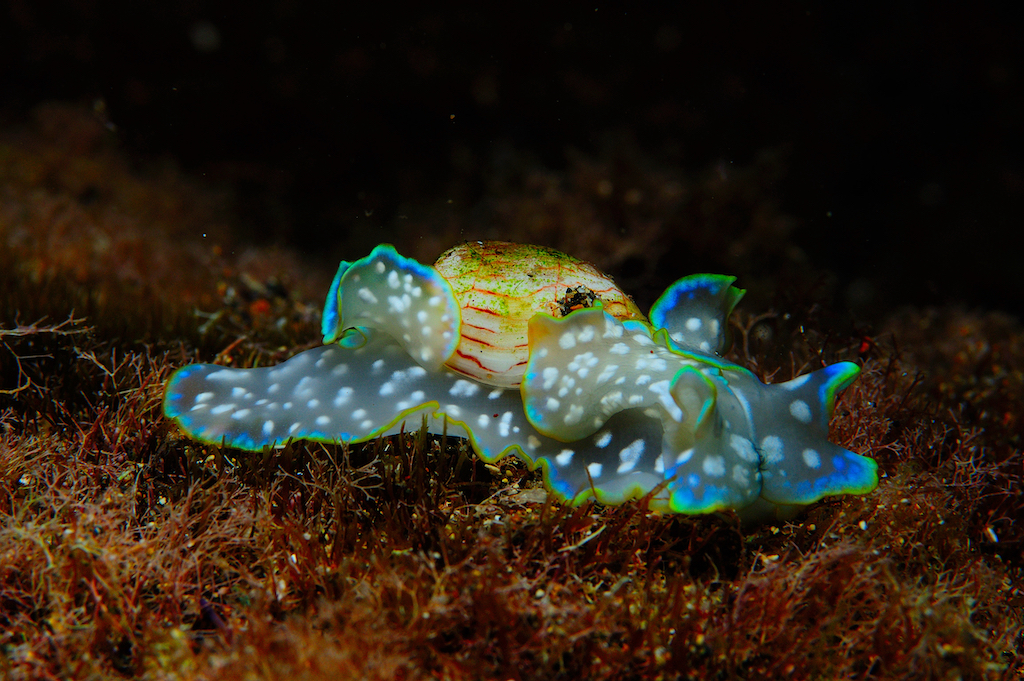
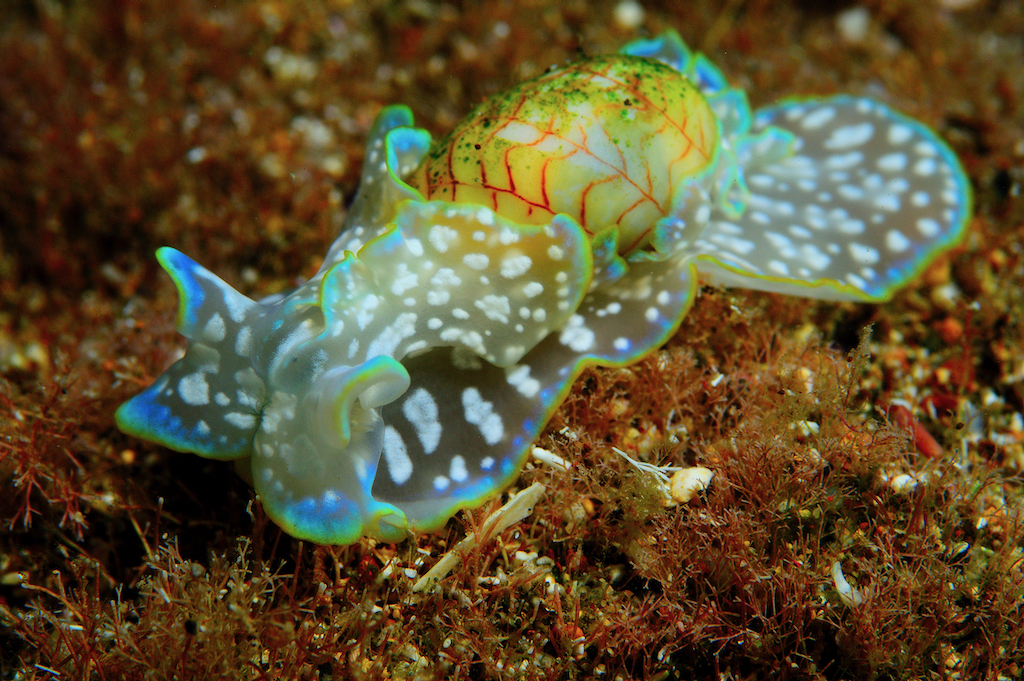
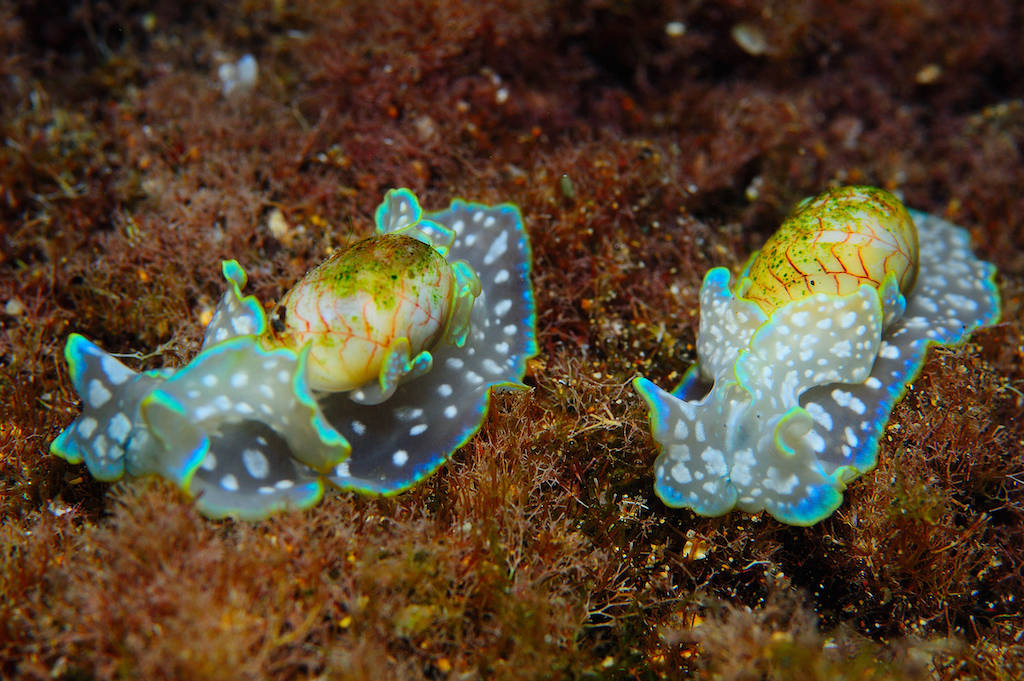
Micromelo undatus, Photos: Aketza Herrero Barrencua
Micromelo undatus, the Wavy Bubble Snail
What is it? What is this beauty? Maybe you have already asked this while scrolling down. This is Micromelo undatus, a tiny mollusc from the family of barrel bubble snails (Acteonidae). They are carnivores, feeding on tiny bristly ringworms (Polychaete) and guess what – they incorporate the toxins of these worms and use them to defend themselves from their predators such as sea stars! They are active both night and day, and even if they can retract into their shell, they do it rarely.
Where do they live? This species is a jewel that everybody would like to find. It is endemic to the Atlantic Ocean, living in shallow waters from intertidal pools to 10 meters in depth. They are quite tiny, so individuals of this awesome species will be a challenge to find, if you want to meet them personally.
What do they look like? Micromelo undatus is colourful, with an iridescent, almost rainbow-colored edge that follows every corner of the animal’s body. Its tiny shell (smaller than 25 mm) is ornamented with linear, blood-like colour motifs, resembling ancestral paintings. Its body is partly transparent with white spots from front to back.
Finally, it has a hidden secret: it glows under UV – its shell would look red and its body green. This unique species originated 200 million years ago, so respect all of them and their environment, if you find them.
What secrets will this genome reveal? Micromelo undatus is a species that presents a vast array of possibilities in terms of understanding mollusc evolution. Through studying this species, researchers can unravel the processes that led to the formation of snail-like distinctive structures, as well as the transition of molluscs from aquatic to terrestrial environments. Furthermore, Micromelo undatus can provide key insights into the mechanisms that caused the evolution of heterobranchs (mainly snails and slugs). Lastly, Micromelo undatus exhibits unique features to study, such as genes responsible for iridescent colours, mechanisms behind mollusc glow, adaptation to diverse conditions, and oceanic colonization.
Therefore, if you vote for Micromelo undatus as Mollusc of the Year, its genome will offer a unique opportunity to explore all of these areas and much more!
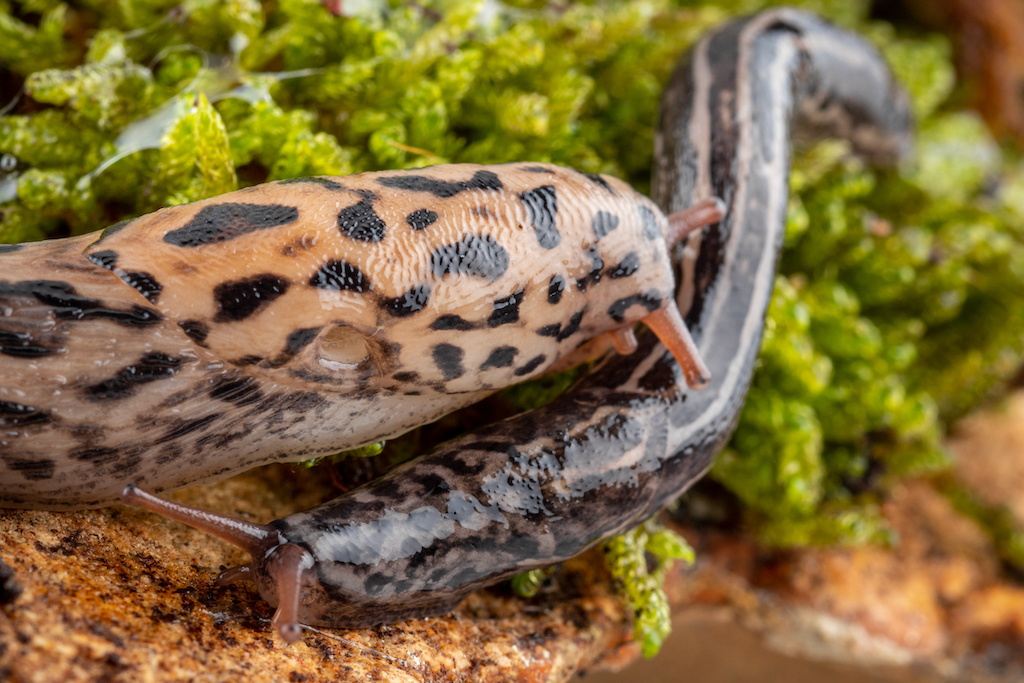
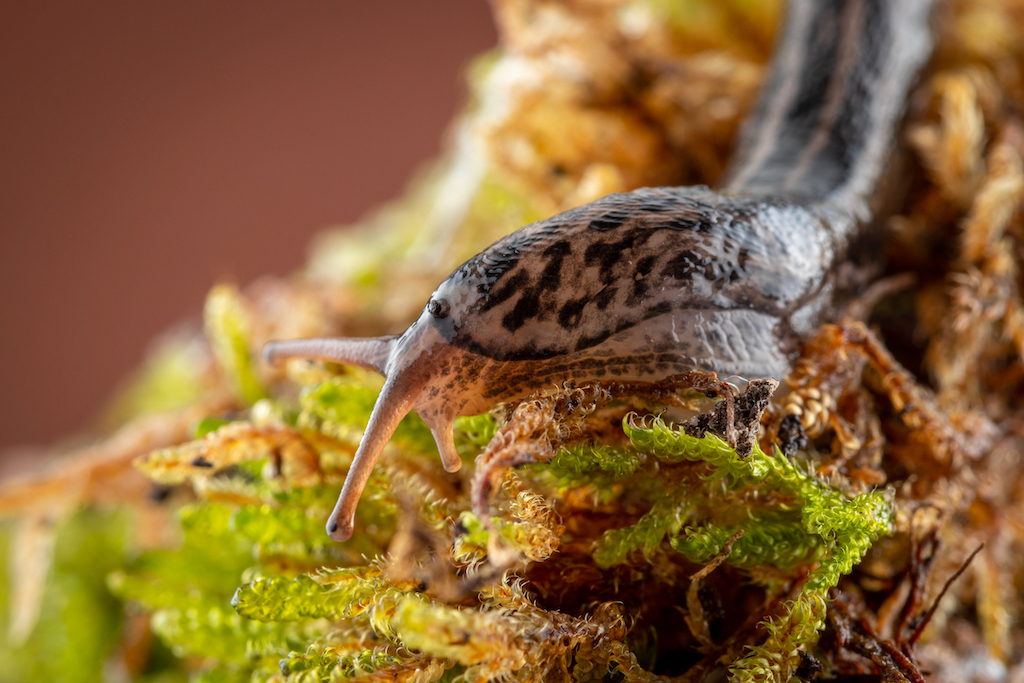
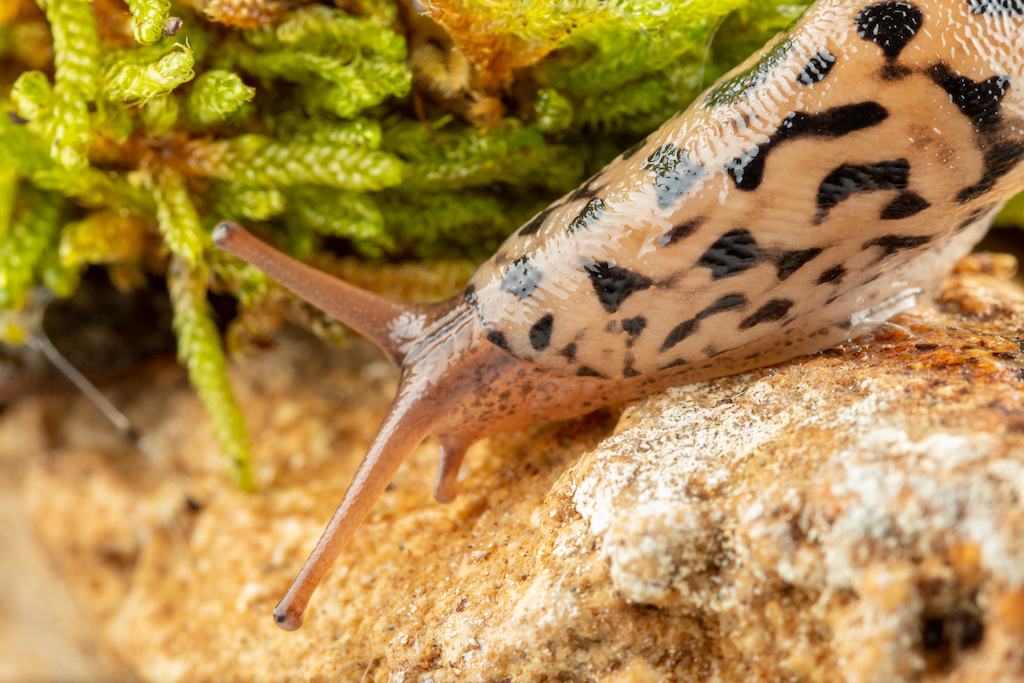
Limax maximus, Photos: Julian Taffner
Limax maximus, the leopard slug
What is it? Leopard slugs are 10–20 cm long gastropods, that can live up to 3 years. They can be found resting beneath logs and stones during daytime and dry periods and only come out at night or during rainfall. Their homing instinct guides them back to their shelter after roaming. Sometimes these slugs are called the gardener’s friend, as they mainly forage on detritus and fungi, but other slug species and their eggs are on their dining menu as well. Unlike pest species like Arion vulgaris – the ‘Spanish’ slug – you will very seldom find the leopard slug eating your garden plants. Leopard slugs are known for their unusual mating behavior: courting for hours, then climbing up a tree and lowering themselves down on a thread of mucus and evert their penises to exchange sperm – and yes, they are hermaphrodites .
Where do they live? Originally home to Europe and the Mediterranean countries of Africa, it has been introduced to Africa, Asia, North and South America, as well as to Australia and New Zealand. They prefer humid locations like gardens, parks or damp cellars, where they might also overwinter.
What do they look like? The leopard slug has a grayish to brownish colored body decorated with the dark stripes, dots and spots visually resembling a leopard pattern. The first third of their body is protected by a beautifully marbled mantle shield which covers an internal and reduced shell and their lung. The end of their tail is keeled. Leopard slugs are frequently held as pets in terraria for their appealing patterns.
What secrets will this genome reveal? An assembled genome will shed light on their success to adapt to different climatic ranges and thus, invade new habitats, relevant particularly in times of climate change. It could further reveal the mechanisms behind their many color variations as well as their shell reduction.
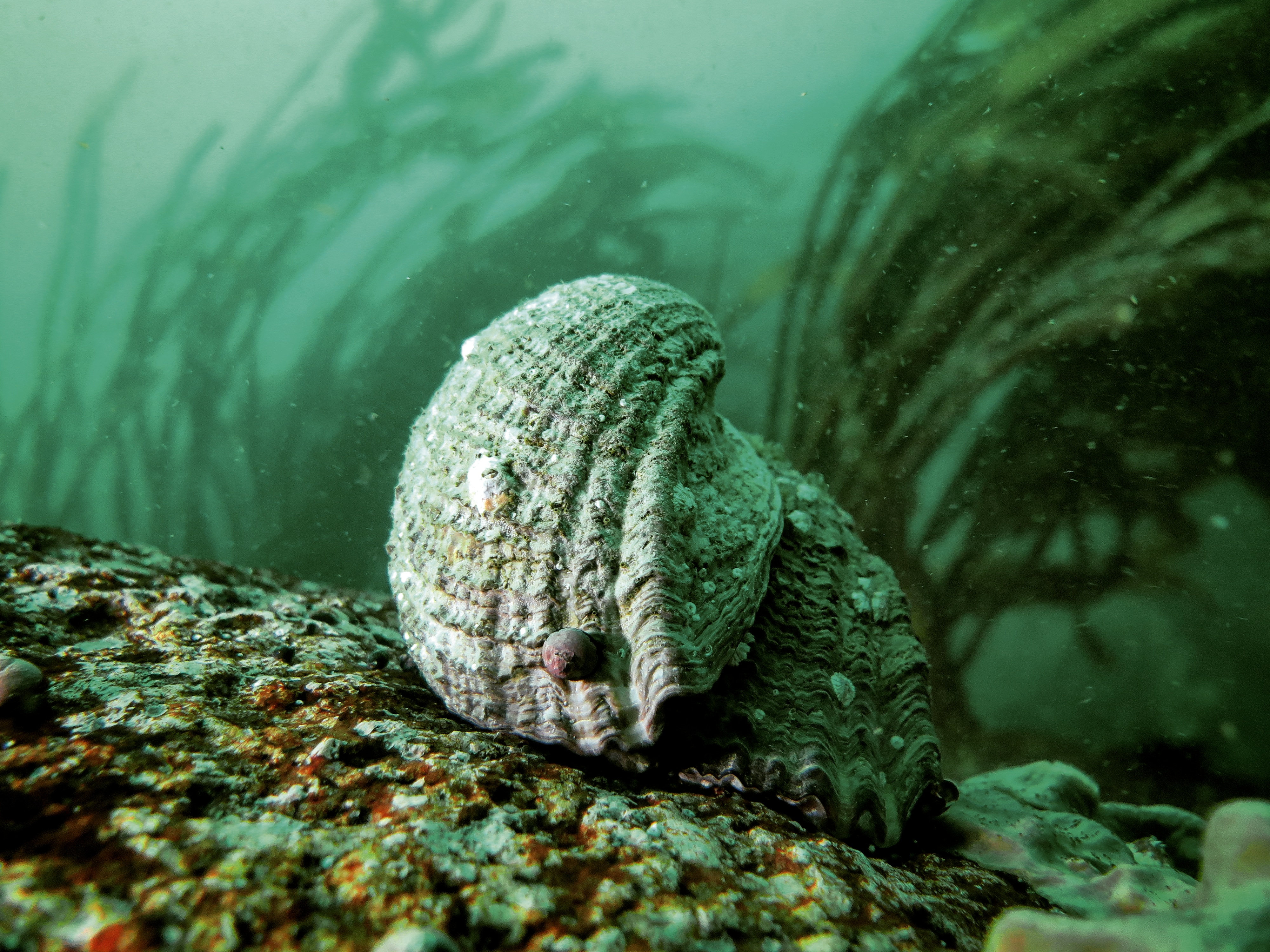
Concholepas concholepas, Photo: Gustavo Duarte Sepulveda

Concholepas concholepas, Photo: Cristian Sepulveda
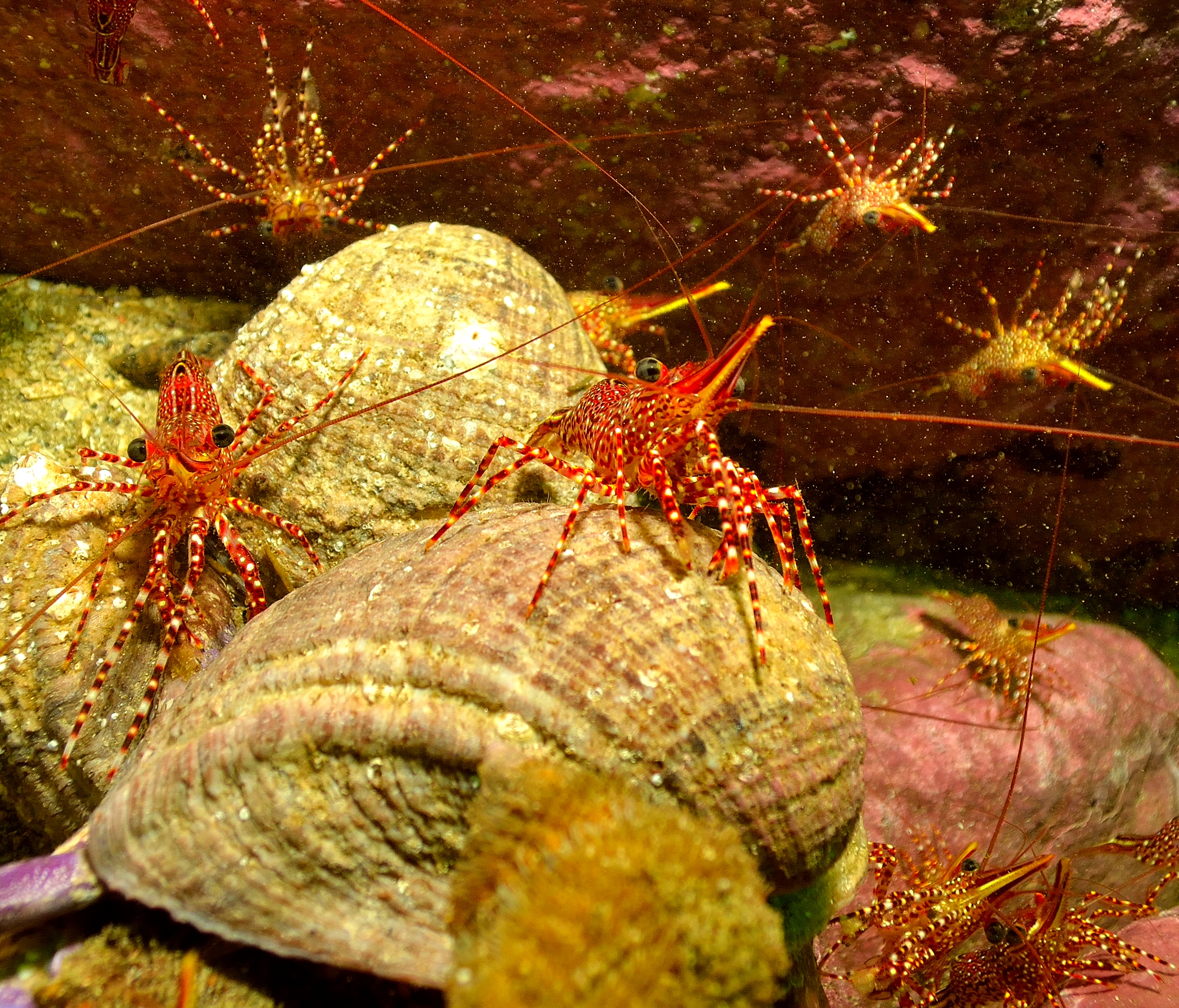
Concholepas concholepas, Photo: Cristian Sepulveda
Concholepas concholepas, the Chilean Abalone
What is it? The Chilean abalone or Peruvian tolina, also known as ‘loco’ (a loanword from the Mapuche people in Chile), is a species of large edible sea snail, belonging to the family Muricidae. It is a top predator in the communities where it lives, and is considered one of several keystone species controlling the abundance of other species. The ‘loco’ plays important cultural, social, economic, evolutionary, and ecological roles in Chile and Peru. It is one of the main species targeted by territorial use rights in fisheries, that support numerous artisanal fishers in Chile.
Where do they live? The ‘loco’ lives in intertidal and shallow subtidal rocky habitats along the temperate cold coast of the Southeastern Pacific, all the way from Lobos de Afuera in Peru to Cape Horn in Chile. It is often found living among holdfasts in kelp forests or in encrusting communities composed of mussels or barnacles.
What do they look like? As you might have guessed, superficially this snail resembles an abalone from the west coast of continental USA and Mexico. However, the loco is a muricid rock-snail with a large foot and a rugged shell. When mature, it can reach 15 cm in shell length (or more).
What secrets will this genome reveal? The ‘loco’ has been used as food by humans since pre-Columbian times. It has experienced overexploitation for more than half a century, and some populations inhabit heavily polluted coastal areas. Its genome will help understand how marine invertebrates deal, at a molecular level, with heavy fishing and tolerate polluted environments. Its genome is also important to understand how the different populations are connected across its wide range of distribution and if any population has experienced local adaptation. Furthermore, the oxygen transporter hemocyanin in the blood of the Chilean abalone has immunotherapeutic effects against some types of cancer. Interrogating its genome can boost the fighting against human disease and lead to the discovery of new molecules of pharmaceutical relevance.